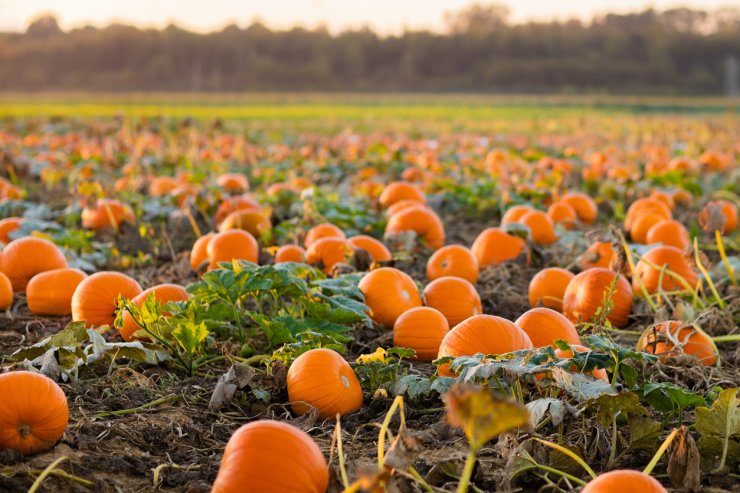
Pumpkin patch
You can grow pumpkins from seeds or seedlings. Part of it depends on your preference, and part of it depends on your growing season. Check the seed packet for the days to maturity and back up to see when your last planting day would be. If your growing season is on the short side, start your pumpkins indoors and then transplant the seedlings outside at the proper time.
Seed Planting Process
If you prefer starting your pumpkin patch from scratch, you’ll need to get some seeds. Pumpkin seeds need warm soil to germinate—at least 65 degrees F at a depth of 2 inches. And they don’t like frost, either. So be sure your last frost is past before you start planting.
You’ll want to follow the planting directions on your seed packets so you are starting your new seeds at the right depth. In general, you can plant pumpkin seeds about an inch down, with up to five seeds in each little hill of soil that you’ve prepared for them. You’ll thin those out to two or three plants per hill once the seedlings get growing.
If you’re planting a smaller variety, you’ll be able to plant the seed hills closer together. The general spacing for vining pumpkins is 5 to 6 feet between hills, with rows 10 to 15 feet apart. If you’re growing semi-bush pumpkins, you’ll want about 4 feet between hills and about 8 feet between rows. Always read the directions on the seed packet.
Your rows should be pretty far apart, whether there are pumpkins growing in the next row or not. Remember, pumpkins like to spread out, so plant your next row about 5 feet away.
Growing from Seedlings
Pumpkins grow best when the seeds are sown directly where they’re going to grow. But if you live in an area with a shorter growing season, you can start your pumpkin seeds indoors. Keep in mind that despite their sturdy looking exterior when they’re fully ripened, pumpkins are tender plants. Treat them gently.
To get your seedlings going, plant seeds in starter pots at least 2 inches wide and 2 inches deep. You’ll need about four weeks to get from seed to transplantable seedling. Be sure to harden off your plants before you set them out in the garden. Give them a little outdoor time with indirect light every day for about five days, and bring them in at night. For the next five days, leave them outside in a sheltered spot, and if it’s warm enough, leave them out overnight. This process helps strengthen the plant’s cells and makes them more likely to survive transplanting.
When the soil temperature reaches at least 65 degrees F, go ahead and transplant your young pumpkin plants. Remove weeds by hand when they show up.
Be sure you have the proper soil prepared in your garden to host your pumpkin vines. And whatever you do, don’t let their soil dry out. Pumpkins are hardy plants, but they don’t do well if they’re not well-watered.
Have you tried growing pumpkins from seeds or seedlings? Which method do you prefer—and why? Please share your experiences with us by commenting below.


 Previous
Previous


I planted them from seed two summers ago. It’s a great deal. If you think you get a lot of zucchini, the amount of good pumpkins is incredible — I gave a lot away and many I feed to my chickens. I recommend planting them wholeheartedly.. I’m in 5B.